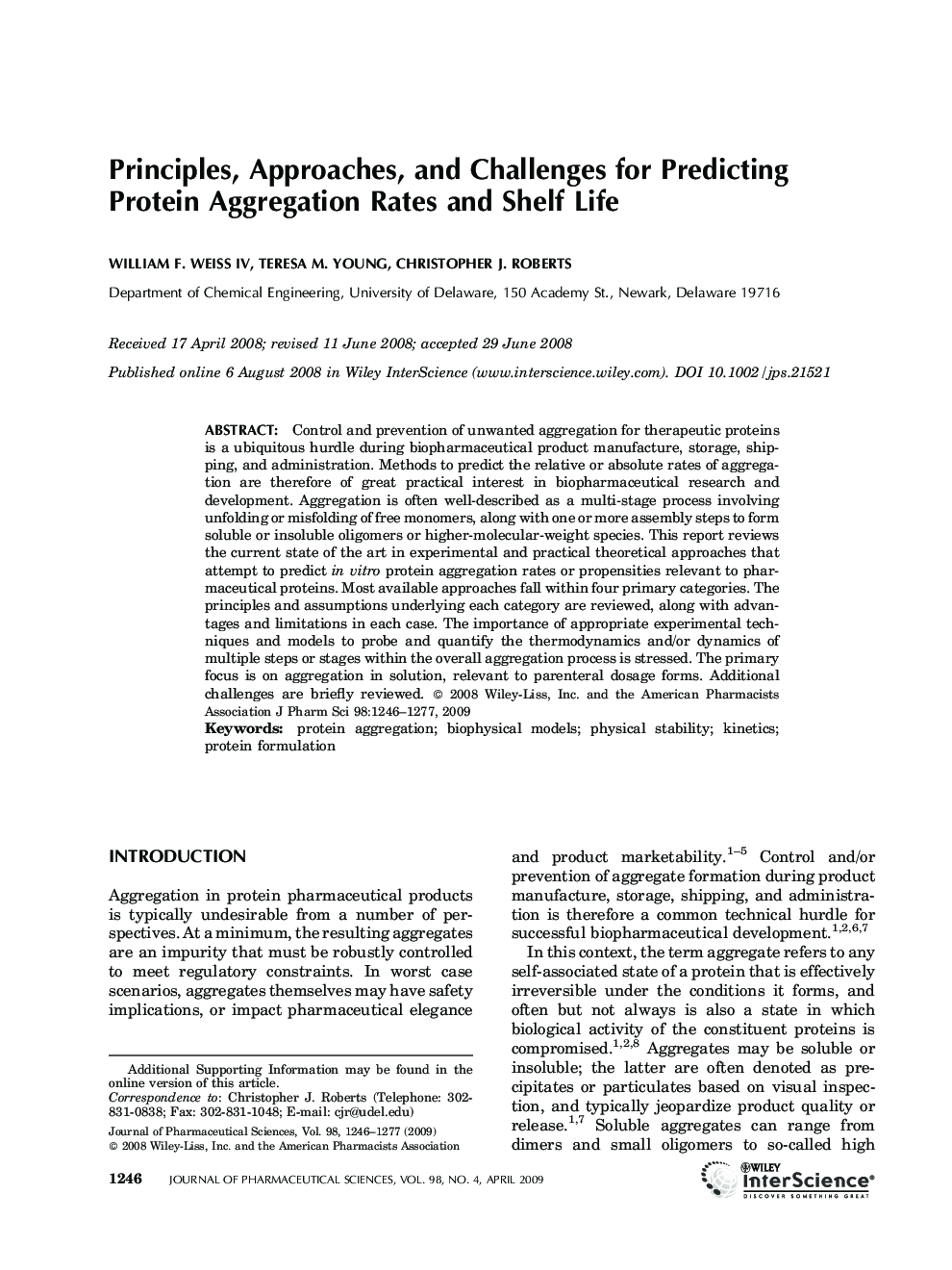| Article ID | Journal | Published Year | Pages | File Type |
|---|---|---|---|---|
| 2487088 | Journal of Pharmaceutical Sciences | 2009 | 32 Pages |
Abstract
Control and prevention of unwanted aggregation for therapeutic proteins is a ubiquitous hurdle during biopharmaceutical product manufacture, storage, shipping, and administration. Methods to predict the relative or absolute rates of aggregation are therefore of great practical interest in biopharmaceutical research and development. Aggregation is often well-described as a multi-stage process involving unfolding or misfolding of free monomers, along with one or more assembly steps to form soluble or insoluble oligomers or higher-molecular-weight species. This report reviews the current state of the art in experimental and practical theoretical approaches that attempt to predict in vitro protein aggregation rates or propensities relevant to pharmaceutical proteins. Most available approaches fall within four primary categories. The principles and assumptions underlying each category are reviewed, along with advantages and limitations in each case. The importance of appropriate experimental techniques and models to probe and quantify the thermodynamics and/or dynamics of multiple steps or stages within the overall aggregation process is stressed. The primary focus is on aggregation in solution, relevant to parenteral dosage forms. Additional challenges are briefly reviewed.
Related Topics
Health Sciences
Pharmacology, Toxicology and Pharmaceutical Science
Drug Discovery
Authors
William F. IV, Teresa M. Young, Christopher J. Roberts,
